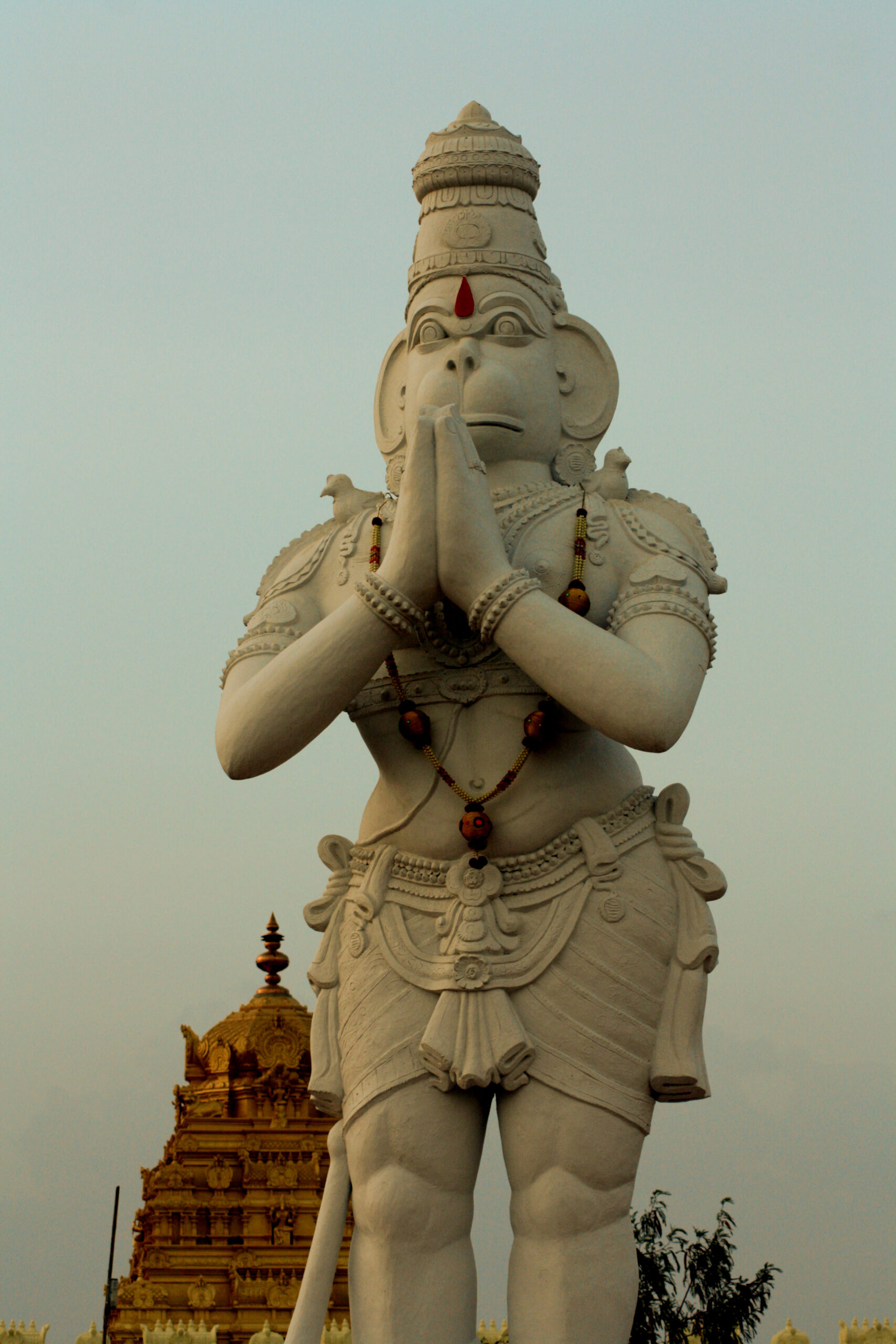Overview
Introduction to Sunderkand
Sunderkand is a significant chapter in the epic Ramayana, which holds immense wisdom and spiritual teachings. It is a compilation of beautiful verses and hymns that describe the heroic journey of Lord Hanuman in search of Goddess Sita, who was abducted by the demon king Ravana. Sunderkand is often recited and revered by devotees for its profound impact on their lives. The lyrics of Sunderkand are filled with devotion, courage, and determination, inspiring readers to overcome obstacles and find inner strength. By delving into the depths of Sunderkand, one can unlock the hidden treasures of knowledge and gain a deeper understanding of the Ramayana and its teachings.
Importance of Sunderkand
Sunderkand holds immense importance in Hindu mythology and is considered a significant part of the epic Ramayana. It is a chapter dedicated to Lord Hanuman and his journey to find Sita, the wife of Lord Rama, who was abducted by the demon king Ravana. Understanding the spiritual significance of Sunderkand allows devotees to connect with the divine energy and gain insights into the teachings of devotion, courage, and selflessness. By reciting Sunderkand, one can seek blessings, protection, and guidance from Lord Hanuman, who is revered for his unwavering loyalty and strength. The recitation of Sunderkand is believed to bring peace, prosperity, and spiritual growth to individuals. It is a powerful tool to overcome obstacles, remove negativity, and attain inner peace. Therefore, delving into the depths of Sunderkand is essential for anyone seeking spiritual enlightenment and a deeper understanding of the divine.
Summary of Sunderkand
Sunderkand is a significant chapter in the epic Ramayana, dedicated to the adventures of Lord Hanuman. It is believed that reading Sunderkand brings immense blessings and grace from Lord Hanuman. The summary of Sunderkand revolves around the journey of Hanuman to Lanka in search of Sita, the wife of Lord Rama. Hanuman’s unwavering devotion, courage, and intelligence are showcased as he overcomes various obstacles and faces powerful adversaries. Through his selfless actions, Hanuman not only finds Sita but also delivers a message of hope and reassurance to Lord Rama. The summary of Sunderkand highlights the divine grace bestowed upon Hanuman by Lord Rama, which enables him to accomplish extraordinary feats and ultimately reunite the divine couple.
Historical Background

Origin of Sunderkand
The origin of Sunderkand can be traced back to the ancient Indian epic, the Ramayana. Sunderkand is a chapter in the Ramayana that focuses on the adventures of Hanuman, the monkey god. It is believed to have been composed by the sage Valmiki. The word ‘Sunderkand’ translates to ‘beautiful chapter’ in English, and it is considered one of the most significant chapters in the Ramayana. It narrates the journey of Hanuman to Lanka in search of Sita, the wife of Lord Rama, who had been kidnapped by the demon king Ravana. Sunderkand showcases the immense devotion, courage, and strength of Hanuman as he overcomes various obstacles and successfully completes his mission. This chapter is often recited and revered by devotees as it symbolizes the power of faith and devotion in overcoming challenges.
Significance in Hindu Mythology
Sunderkand holds immense significance in Hindu mythology. It is a chapter from the epic Ramayana, which narrates the journey of Lord Hanuman to find and deliver a message to Lord Rama‘s wife, Sita, who was held captive by the demon king, Ravana. This chapter is considered to be a powerful prayer and is recited by devotees to seek blessings, protection, and strength. Sunderkand is believed to have the power to remove obstacles, bring success, and fulfill desires. It is also believed to have healing properties and is often recited for the well-being of oneself and loved ones. The popularity of Sunderkand has led to its availability in various languages, including Odia. To download Sunderkand in Odia, one can easily find online resources that provide the text or audio version of this sacred chapter.
Historical Events related to Sunderkand
Sunderkand, an epic chapter from the ancient Indian epic Ramayana, is not just a religious scripture but also a treasure trove of historical events. It recounts the journey of Lord Hanuman to Lanka in search of Sita, the wife of Lord Rama, who had been abducted by the demon king Ravana. This chapter is filled with significant incidents that have shaped the course of history. One such event is the discovery of the jewel known as the Chintamani, which had the power to fulfill any wish. This precious gem played a crucial role in the battle between Lord Rama and Ravana. Another notable event is the burning of Lanka by Hanuman’s tail, an act that showcased his immense strength and devotion. These historical events mentioned in Sunderkand continue to captivate readers and serve as a reminder of the rich cultural heritage of India.
Structure and Content

Chapters and Verses
The Sunderkand is a chapter in the Indian epic Ramayana. It consists of various chapters and verses that depict the journey of Hanuman to Lanka in search of Sita, the wife of Lord Rama. The chapter is filled with important teachings and lessons that hold great wisdom. It is believed that reciting the Sunderkand brings immense blessings and helps in overcoming obstacles. The chapters and verses in the Sunderkand are organized in a sequential manner, each revealing a different aspect of the story. It is through these chapters and verses that the wisdom of Sunderkand is unlocked, providing valuable insights and guidance to the readers.
Characters in Sunderkand
Sunderkand is an important section of the Ramayana, an ancient Hindu epic. It is a chapter that focuses on the journey of Hanuman to Lanka in search of Sita, the wife of Lord Rama. In Sunderkand, various characters play significant roles in the narrative. Some of the notable characters include Hanuman, Lord Rama, Sita, Ravana, and Vibhishana. Hanuman, the monkey god, is the central character and the epitome of devotion and loyalty. Lord Rama, the seventh avatar of Lord Vishnu, is the protagonist and the embodiment of righteousness. Sita, the princess of Mithila and Lord Rama’s wife, is the symbol of purity and loyalty. Ravana, the demon king of Lanka, is the main antagonist who abducts Sita. Vibhishana, Ravana’s brother, plays a crucial role in helping Lord Rama by defecting from Ravana’s side. The characters in Sunderkand contribute to the overall storyline and convey important moral and spiritual lessons.
Key Events and Themes
Sunderkand is a significant chapter in the epic Ramayana, depicting the journey of Hanuman to Lanka in search of Sita. This chapter is filled with key events and themes that hold profound wisdom. One of the key events in Sunderkand is Hanuman’s encounter with the demon king Ravana, where he showcases his immense strength and devotion to Lord Rama. Another important theme is the power of faith and determination, as Hanuman overcomes various obstacles to fulfill his mission. The chapter also highlights the importance of loyalty and selflessness, as Hanuman puts aside his own desires to serve Lord Rama and reunite him with Sita. Overall, Sunderkand serves as a source of inspiration and teaches valuable life lessons through its key events and themes.
Spiritual Significance

Devotional Practices
Devotional practices play a crucial role in unlocking the wisdom of Sunderkand. These practices involve deep reverence and devotion towards Lord Hanuman, the central figure of the epic. One of the most significant devotional practices is the recitation of Sunderkand, a chapter from the ancient Indian epic Ramayana. This sacred text is believed to contain immense power and divine blessings. Devotees often gather in temples or their homes to recite Sunderkand, seeking spiritual guidance and seeking the blessings of Lord Hanuman. The recitation is accompanied by rituals, chants, and offerings, creating an atmosphere of reverence and devotion. Through these devotional practices, individuals connect with the divine energy of Lord Hanuman, experience inner peace, and gain insights into the profound teachings of Sunderkand.
Benefits of Reciting Sunderkand
Reciting Sunderkand has numerous benefits. One of the main benefits is that it invokes the blessings of Lord Hanuman. Hanuman is known for his strength, courage, and devotion. By reciting Sunderkand, one can seek his protection and guidance in times of trouble. Additionally, reciting Sunderkand can help in overcoming obstacles and challenges in life. It is believed to bring peace, prosperity, and happiness. The story of Sunderkand also teaches important life lessons such as the power of faith, perseverance, and loyalty. Overall, reciting Sunderkand is a powerful spiritual practice that can bring immense benefits to one’s life.
Symbolism and Allegories
The Sunderkand, a chapter from the Indian epic Ramayana, is rich in symbolism and allegories. It is believed to hold deep spiritual and philosophical meanings. The various characters and events in the Sunderkand represent different aspects of life and human nature. For instance, the journey of Hanuman to find Sita symbolizes the quest for truth and righteousness. The burning of Lanka by Hanuman signifies the destruction of evil forces. The crossing of the ocean by Hanuman represents the overcoming of obstacles and challenges. These symbolic elements in the Sunderkand make it a profound and insightful text.
Interpretations and Commentaries

Different Interpretations
Different Interpretations
Lorem ipsum dolor sit amet, consectetur adipiscing elit, sed do eiusmod tempor incididunt ut labore et dolore magna aliqua. Ut enim ad minim veniam, quis nostrud exercitation ullamco laboris nisi ut aliquip ex ea commodo consequat.
Sed ut perspiciatis unde omnis iste natus error sit voluptatem accusantium doloremque laudantium, totam rem aperiam, eaque ipsa quae ab illo inventore veritatis et quasi architecto beatae vitae dicta sunt explicabo.
Nemo enim ipsam voluptatem quia voluptas sit aspernatur aut odit aut fugit, sed quia consequuntur magni dolores eos qui ratione voluptatem sequi nesciunt.
Famous Commentaries
Famous Commentaries
Sunderkand, the fifth chapter of the Hindu epic Ramayana, has been the subject of numerous commentaries throughout history. These commentaries serve as valuable resources for understanding the deeper meaning and significance of the text. One of the most famous commentaries is the ‘Sunderkand Path‘ by Goswami Tulsidas, which provides a detailed interpretation of the verses and offers insights into the spiritual teachings conveyed in Sunderkand. Another notable commentary is the ‘Sunderkand Prakash‘ by Swami Jagdishwaranand Saraswati, which delves into the historical and cultural context of the epic. These commentaries not only enhance our understanding of Sunderkand but also shed light on the broader themes of devotion, courage, and righteousness depicted in Ramayana.
Scholarly Perspectives
Sunderkand, an epic chapter from the Ramayana, holds great significance in Hindu mythology. Scholars have extensively studied this sacred text, providing valuable insights into its wisdom and teachings. One such scholarly perspective is the Odia Sunderkand book, which offers a unique interpretation of the epic tale. This book delves deep into the nuances of the narrative, unraveling hidden meanings and symbolism. It explores the profound impact of Sunderkand on individuals’ spiritual journey and its relevance in contemporary times. With its comprehensive analysis and scholarly approach, the Odia Sunderkand book serves as a valuable resource for understanding the wisdom embedded in this ancient scripture.
Impact and Influence

Influence on Literature and Art
The influence of Sunderkand on literature and art is profound. This epic poem has inspired countless authors, poets, and artists throughout the centuries. Its rich and vivid imagery, compelling characters, and timeless themes have served as a wellspring of creativity. The bold passages in Sunderkand capture the essence of its wisdom and have become iconic in their own right. They convey powerful messages of courage, devotion, and perseverance, resonating with readers and viewers alike. From paintings and sculptures to plays and films, the influence of Sunderkand can be seen in various forms of artistic expression. It continues to captivate and inspire both creators and audiences, showcasing the enduring power of this ancient masterpiece.
Devotees’ Experiences and Testimonials
Devotees’ experiences and testimonials are a testament to the profound impact of Sunderkand on their lives. Many devotees have shared their transformative experiences, highlighting the power of this sacred text to bring solace, guidance, and spiritual growth. One devotee recounts how regularly reciting Sunderkand helped them overcome a personal crisis and find inner strength. Another devotee shares how reading Sunderkand brought them peace and clarity during challenging times. Countless devotees have attested to the miraculous outcomes they have witnessed after invoking the blessings of Lord Hanuman through Sunderkand. These testimonials serve as a reminder of the deep devotion and unwavering faith that devotees hold for Sunderkand, and the profound impact it continues to have in their lives.
Author Profile

Latest entries
- 28 June 2025BlogHow to Choose the Best High-Yield Savings Account with 5%+ Interest in India (2025 Guide)
- 28 December 2024BlogTop 6 Employee Management Software for Small Businesses
- 19 December 2024BlogShri Hanuman Chalisa in Hindi Text with English Translation
- 7 August 2024BlogTop 13 Online Master of Social Work Programs

